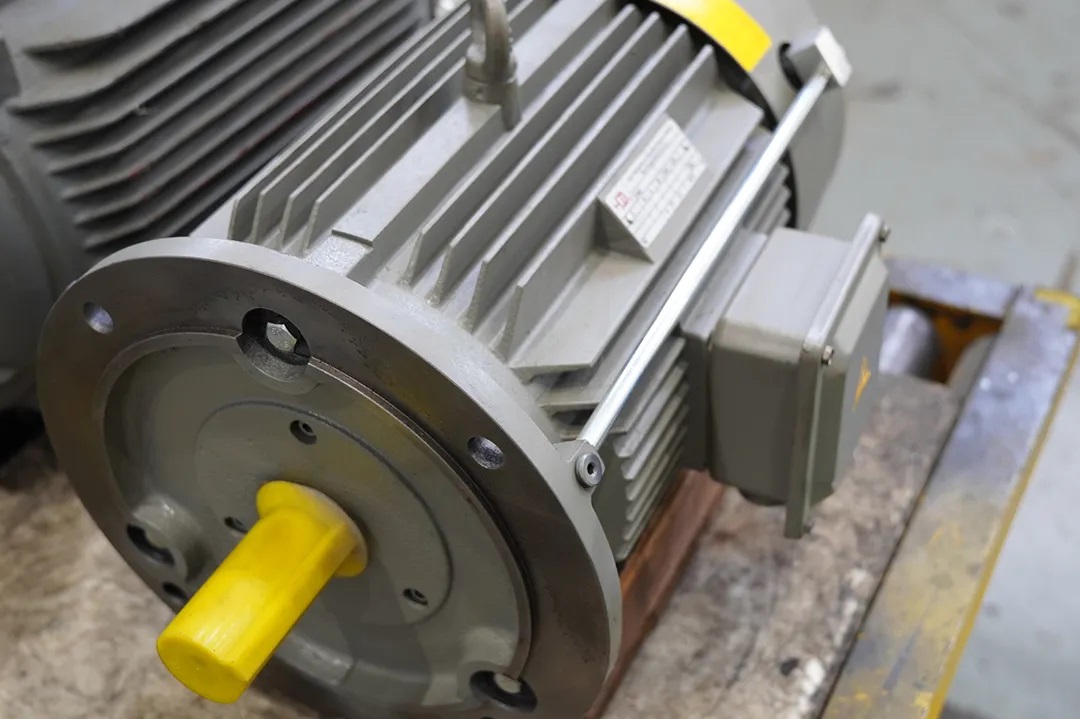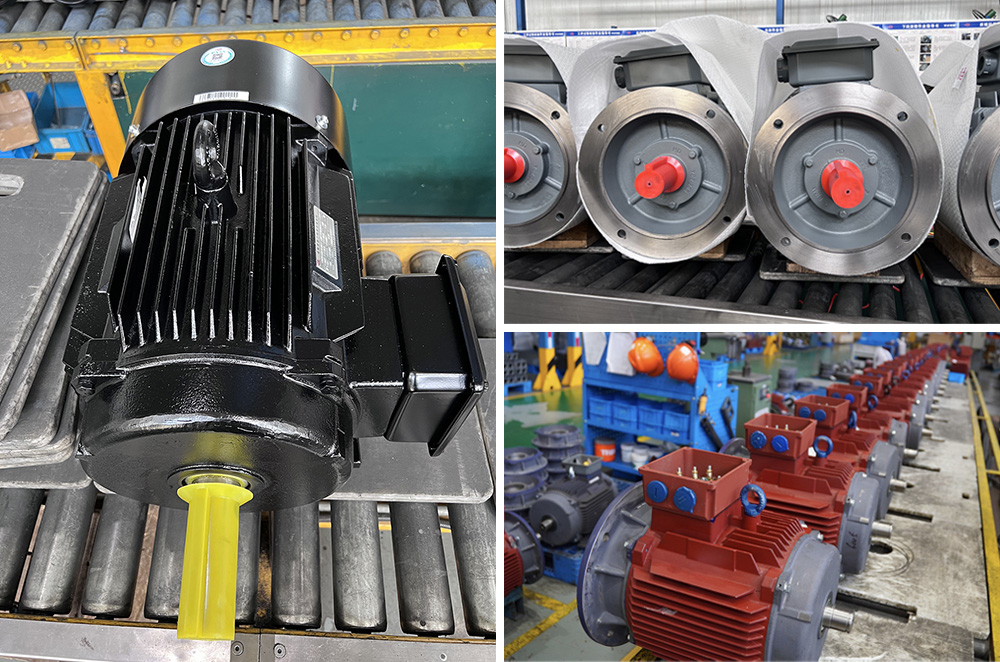There is a significant difference between the starting process of the motor and the stable operating state, with the starting current, torque, and mechanical stress all at extreme levels. If the motor starts frequently (usually defined as starting more than 10 times per hour, or the interval between two starts is less than the time required for motor heat dissipation) due to production processes (such as frequent start stop conveyor equipment, intermittent machine tools) or improper operation, it will cause multiple overlaps and damages to the electrical and mechanical systems of the motor, directly shorten its service life, and even cause sudden failures. The following is a breakdown of the harmful mechanisms of frequent activation from the four core dimensions.

1、Electrical system: Starting current surge causes winding overheating and accelerated insulation aging
The core characteristics of motor starting moment are "high current, low power factor". Frequent starting will expose the electrical system to overload risk for a long time, and the specific hazards are as follows:
01. Sudden increase in copper loss and overheating damage in windings
The starting current of a regular asynchronous motor can reach 5-8 times the rated current (such as an 11kW motor with a rated current of about 22A and a starting current of 110-176A), while the copper loss (P=I ² R) is proportional to the square of the current. During startup, the copper loss will instantly increase to 25-64 times the rated operating current. Frequent starting can lead to continuous accumulation of heat in the winding. If the interval between two starts is too short (such as less than 5 minutes), the winding temperature cannot be reduced to the safe range (the maximum allowable temperature for Class A insulated motors is generally 105 ℃), which can easily cause a "temperature superposition effect". For example, after the first start-up of a certain motor, the winding temperature rises to 90 ℃. If it is restarted without sufficient heat dissipation, the temperature may exceed 120 ℃, causing the insulation paint to soften, discolor, and even lead to winding turn to turn short circuits.
02. The lifespan of the insulation system is significantly shortened
The lifespan of winding insulation materials (such as insulation paint and insulation paper) is exponentially related to temperature, usually following the "10 ℃ rule": that is, for every 10 ℃ increase in temperature, the insulation lifespan is halved. The repeated overheating caused by frequent starting can accelerate the aging process of insulation materials - a motor originally designed to have a lifespan of 10 years may have its insulation lifespan shortened to 3-5 years if it is started more than 50 times a day. More seriously, overheating can cause the insulation material to become brittle, and cracks are prone to occur under the vibration of the motor, leading to ground leakage or phase to phase short circuit faults, causing the motor to trip or even burn out.
03. Power and control circuit impact
Frequent high current starting can cause impact on the power grid, leading to voltage fluctuations (which may cause a 10% -20% drop in local grid voltage) and affecting the normal operation of other equipment in the same power grid. At the same time, control components such as contactors and circuit breakers of motors generate arcs due to high currents during each start-up. Frequent arcs can erode the surface of the contacts, causing increased contact resistance, abnormal heating, and even contact adhesion, leading to control circuit failures.
2、Mechanical structure: Instantaneous torque impact and intensified friction lead to component wear
When the motor starts, there is not only electrical shock, but the mechanical system will also bear stress far beyond stable operation. Frequent starting will increase the wear rate of mechanical components by multiple times:
01. Torque impact damage to the shaft and coupling
The starting torque of a motor at the moment of starting is usually 1.5-2.5 times the rated torque. If there is inertia in the load (such as a fan or water pump), a "torque shock" will occur during starting - the connection between the shaft and the coupling will be subjected to instantaneous torsional stress. Frequent start-up can cause fatigue cracks in stress concentrated areas of the shaft, such as keyways and shoulders, which may accumulate over time and lead to shaft fracture. For example, a certain conveying equipment motor developed a crack at the keyway of the shaft after only 6 months of operation due to starting 20 times per hour. The shaft needs to be replaced in order to resume use.
02. Lubrication failure and accelerated wear of bearings
The motor bearings rely on the oil film formed by lubricating grease to reduce friction, and at the moment of starting, the speed of the bearings rapidly increases from 0 to the rated speed. The oil film of the lubricating grease is easily "sheared and damaged", causing direct contact friction between the metal. Frequent start-up can cause repeated damage and reconstruction of the oil film, greatly reducing the service life of the lubricating grease (lubricating grease that could have been used for 1 year may need to be replaced after 3 months under frequent start-up). At the same time, metal contact friction will generate wear particles, which will mix into the lubricating grease and further intensify the wear of the bearing raceway and rolling elements, resulting in increased bearing clearance and vibration, ultimately leading to faults such as "bearing abnormal noise" and "motor jamming".
03. Impact damage of load machinery
Frequent starting of the motor not only affects itself, but also causes impact on the load equipment. For example, frequent start stop of belt conveyor motors can cause the conveyor belt to slip and deviate due to repeated start stop inertia, accelerating the wear of the conveyor belt; Frequent starting of the water pump motor can cause a "water hammer effect" in the pipeline, impacting the pipeline interface and valves, resulting in pipeline leakage or valve damage.
3、Energy consumption and efficiency: the combination of high energy consumption and low efficiency during the start-up process
The efficiency of the motor starting process is much lower than that of the stable operation stage. Frequent starting can lead to a significant increase in overall energy consumption and serious energy waste
01. High energy consumption characteristics during the start-up phase
When the motor starts, the power factor is extremely low (usually only 0.2-0.4), which means that most of the current provided by the power grid is "reactive current" (used to establish the magnetic field), and only a small portion is "active current" (used to drive the load). Therefore, the energy utilization rate during the start-up phase is extremely low - the energy consumed during one start-up may be equivalent to the energy consumed during stable operation for 10-20 minutes. For example, a 7.5kW motor consumes approximately 0.3kWh of electricity to start once. If it starts 15 times per hour, the energy consumption for starting alone reaches 4.5kWh, far exceeding its rated operating energy consumption of 2-3kWh per hour.
02. Efficiency loss caused by frequent start stop
The motor has the highest efficiency when running at rated load (usually up to 85% -95%), while during the starting process, the motor is in a "light load or no-load" state (the load has not fully followed at the moment of starting), with an efficiency of only 30% -50%. Frequent starting will keep the motor in a low efficiency operating range for a long time, resulting in a significant decrease in overall energy utilization efficiency. Taking the machine tool motor of a certain factory as an example, if it frequently starts and stops due to process requirements, the monthly energy consumption will increase by 20% -30% compared to continuous stable operation, resulting in significant energy waste.
4、Protection system and reliability: increased risk of failure and maintenance costs
Frequent starting will keep the motor's protection system (such as overheating protection and overload protection) in a "critical triggering state" for a long time, while increasing the probability of failure and leading to increased maintenance costs:
01. Protection system misoperation or failure
The overheat protection of motors (such as PTC thermistors and bimetallic strips) is usually set with a "delay trigger" function to avoid short-term overheating false triggering protection during normal start-up. However, frequent starting can keep the winding temperature at a high level, which may cause the protection system to "frequently operate" and result in equipment shutdown; If the protection threshold is lowered to avoid shutdown, it will cause the motor to lose effective overheating protection and increase the risk of burnout. In addition, frequent current surges can interfere with the control and protection devices of motors such as frequency converters and soft starters, leading to accelerated aging of internal components and a decrease in protection accuracy.
02. Increased probability of failure and maintenance costs
Frequent starting can cause problems such as winding aging, bearing wear, and shaft fatigue, which can significantly increase the frequency of motor failures - motors that were originally maintained 1-2 times a year may need to be shut down for maintenance every 3-6 months to replace components such as windings, bearings, and contactors. Taking the pump motor of a certain chemical enterprise as an example, due to frequent starting and stopping, the annual maintenance cost increases by 40% -60% compared to normal operation. At the same time, the production losses caused by downtime due to faults are difficult to estimate.
Core measures to address the hazards of frequent motor starting
In response to the above hazards, mitigation can be achieved from three aspects: control optimization, equipment upgrade, and maintenance enhancement
01. Control optimization: Use a soft starter or frequency converter to reduce the starting current to 2-3 times the rated current, reducing current surge; Optimize the start-up interval through PLC programming to ensure sufficient heat dissipation of the motor (generally requiring a start-up interval of ≥ 10 minutes and a high-capacity motor of ≥ 15 minutes).
02. Equipment upgrade: Choose a "frequent start dedicated motor" (such as YZR series wound rotor asynchronous motor), with a higher winding insulation level (usually F or H level), and bearings using high-temperature resistant grease that can withstand more frequent start stop impacts.
03. Maintenance enhancement: Shorten the lubricant replacement cycle (replace the motor every 3-6 months when starting frequently), and regularly (monthly) check the winding temperature and bearing vibration; Install a "start count counter" in the motor control cabinet to monitor the start stop frequency in real time and avoid exceeding the limit operation.
The harm of frequent motor start-up is not the damage of a single component, but a chain reaction of electrical, mechanical, and energy consumption systems. If this problem is ignored, it will not only increase equipment maintenance costs and energy consumption, but also may lead to production interruption due to sudden failures. In industrial production, it is necessary to plan the motor start stop frequency reasonably based on process requirements, balance production efficiency and equipment life through technological upgrades and refined maintenance, and avoid unnecessary losses caused by "excessive start stop".
Hengda Electric has always been dedicated to the research and development, production, and service of various types of motors. With advanced technology and equipment, lean manufacturing processes, reliable product quality, and satisfactory after-sales service, the company provides customers with the most suitable motor professional solutions and creates greater social value.







